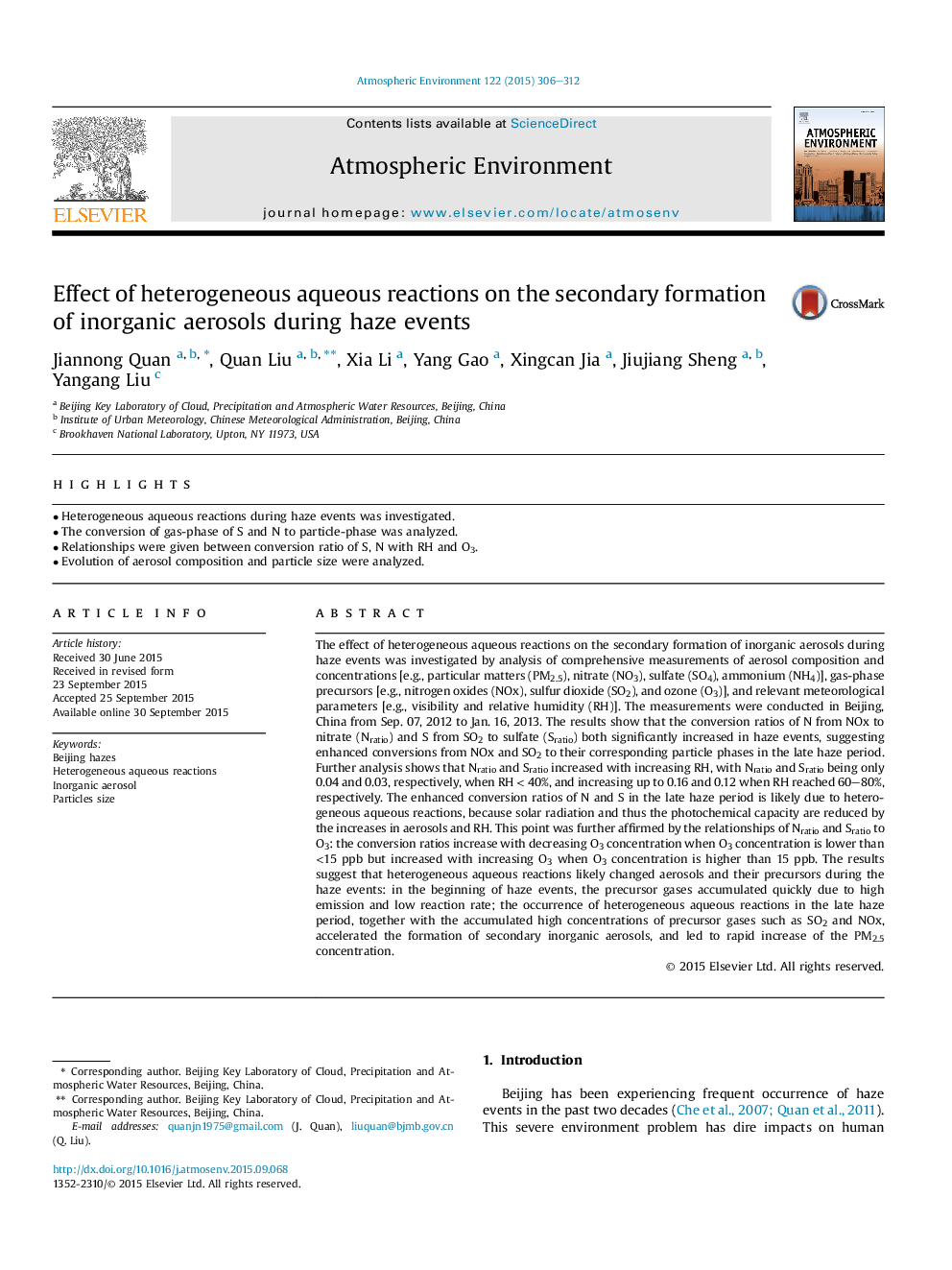| کد مقاله | کد نشریه | سال انتشار | مقاله انگلیسی | نسخه تمام متن |
|---|---|---|---|---|
| 6337000 | 1620349 | 2015 | 7 صفحه PDF | دانلود رایگان |
عنوان انگلیسی مقاله ISI
Effect of heterogeneous aqueous reactions on the secondary formation of inorganic aerosols during haze events
ترجمه فارسی عنوان
اثر واکنش های آب نیتروژن بر تشکیل ثانویه آئروسل های معدنی در حوادث حاد
دانلود مقاله + سفارش ترجمه
دانلود مقاله ISI انگلیسی
رایگان برای ایرانیان
کلمات کلیدی
مخمصه پکن، واکنش های آب هیدروژن، آرسنیک معدنی، اندازه ذرات،
موضوعات مرتبط
مهندسی و علوم پایه
علوم زمین و سیارات
علم هواشناسی
چکیده انگلیسی
The effect of heterogeneous aqueous reactions on the secondary formation of inorganic aerosols during haze events was investigated by analysis of comprehensive measurements of aerosol composition and concentrations [e.g., particular matters (PM2.5), nitrate (NO3), sulfate (SO4), ammonium (NH4)], gas-phase precursors [e.g., nitrogen oxides (NOx), sulfur dioxide (SO2), and ozone (O3)], and relevant meteorological parameters [e.g., visibility and relative humidity (RH)]. The measurements were conducted in Beijing, China from Sep. 07, 2012 to Jan. 16, 2013. The results show that the conversion ratios of N from NOx to nitrate (Nratio) and S from SO2 to sulfate (Sratio) both significantly increased in haze events, suggesting enhanced conversions from NOx and SO2 to their corresponding particle phases in the late haze period. Further analysis shows that Nratio and Sratio increased with increasing RH, with Nratio and Sratio being only 0.04 and 0.03, respectively, when RH < 40%, and increasing up to 0.16 and 0.12 when RH reached 60-80%, respectively. The enhanced conversion ratios of N and S in the late haze period is likely due to heterogeneous aqueous reactions, because solar radiation and thus the photochemical capacity are reduced by the increases in aerosols and RH. This point was further affirmed by the relationships of Nratio and Sratio to O3: the conversion ratios increase with decreasing O3 concentration when O3 concentration is lower than <15Â ppb but increased with increasing O3 when O3 concentration is higher than 15Â ppb. The results suggest that heterogeneous aqueous reactions likely changed aerosols and their precursors during the haze events: in the beginning of haze events, the precursor gases accumulated quickly due to high emission and low reaction rate; the occurrence of heterogeneous aqueous reactions in the late haze period, together with the accumulated high concentrations of precursor gases such as SO2 and NOx, accelerated the formation of secondary inorganic aerosols, and led to rapid increase of the PM2.5 concentration.
ناشر
Database: Elsevier - ScienceDirect (ساینس دایرکت)
Journal: Atmospheric Environment - Volume 122, December 2015, Pages 306-312
Journal: Atmospheric Environment - Volume 122, December 2015, Pages 306-312
نویسندگان
Jiannong Quan, Quan Liu, Xia Li, Yang Gao, Xingcan Jia, Jiujiang Sheng, Yangang Liu,
